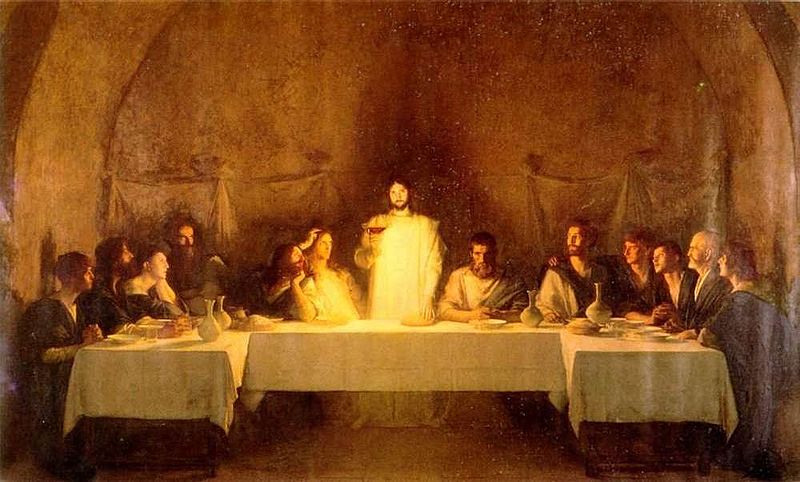Ephrem the Syrian (born 306), a Syrian writer of commentaries and devotional hymns which are sometimes regarded as the greatest specimens of Christian poetry prior to Dante, wrote this stanza about the Transfiguration:
The Lord who is beyond measure
measures out nourishment to all,
adapting to our eyes the sight of himself,
to our hearing his voice,
His blessing to our appetite,
His wisdom to our tongue. Hymns on Paradise 9.27.
There was only one brilliant moment in the life of Jesus, and that was on the Mount of Transfiguration; then He emptied Himself the second time of His glory, and came down into the demon-possessed valley. For thirty-three years Jesus laid out His life to do the will of His Father, and, John says, “we ought to lay down our lives for the brethren.” It is contrary to human nature to do it.The comment above is from My Utmost for His Highest by Oswald Chambers. It is interesting that this is the only time that Christ was revealed in His eternal glory during His life prior to crucifixion.
Why is Transfiguration so important in the Christian Church that it has its own day on the Church calendar?
Somewhat reminiscent of Elijah's departure into heaven (2 Kings 2:1-12), Christ appears with Moses and Elijah in a heavenly "state" fulfilling Moses' request of Ex. 33:18.
From the Concordia Self Study Bible:
Moses is the representative of the old covenant and the promise of salvation, which was soon to be fulfilled in the death of Jesus. Elijah is the appointed restorer of all things (Mal 4:5–6; Mk 9:11–13). The disciples here witness the confirmation of Jesus’ claim (5:17) that he fulfills the Law (Moses) and the Prophets (Elijah). Lk 9:31 says that they talked about Christ’s death.The Transfiguration of Jesus is the sight of Jesus in His divinity. Everything else in His earthly life is witnessed through His humanity until His resurrection. It becomes a message of how Jesus, the true God can encompass the past, the present, and the future in a moment, in a flash, because He is God. The Transfiguration reveals His glory, wherein the remainder of His life reveals His humiliation and the cross of suffering.
The comfort of the Transfiguration is His return to the cross of His human life in this sinful world. He followed through with His word and promises to redeem us from sin, to suffer hell, and then proclaim His victory. The Transfiguration is not His victory, rather it was a revelation of the unity of all of history, the Old and the New Testament, the Apostles and Prophets before God, upon whom the Church stands.
Our Transfiguration began in our baptism and continues in the miracle of the resurrected victory feast at the church's altar. Our hope is in the forgiveness He earned in the total sacrifice of His entire life for our sin and not in the moment of glory in the Transfiguration. His presence in the sacramental life is better than the one time experience of the Transfiguration.
As those in the Transfiguration pictures teach us, while we are on this sinful earth, we can only humble ourselves in reverence to His presence. This is why we kneel at the Lord's Supper when possible.



No comments:
Post a Comment